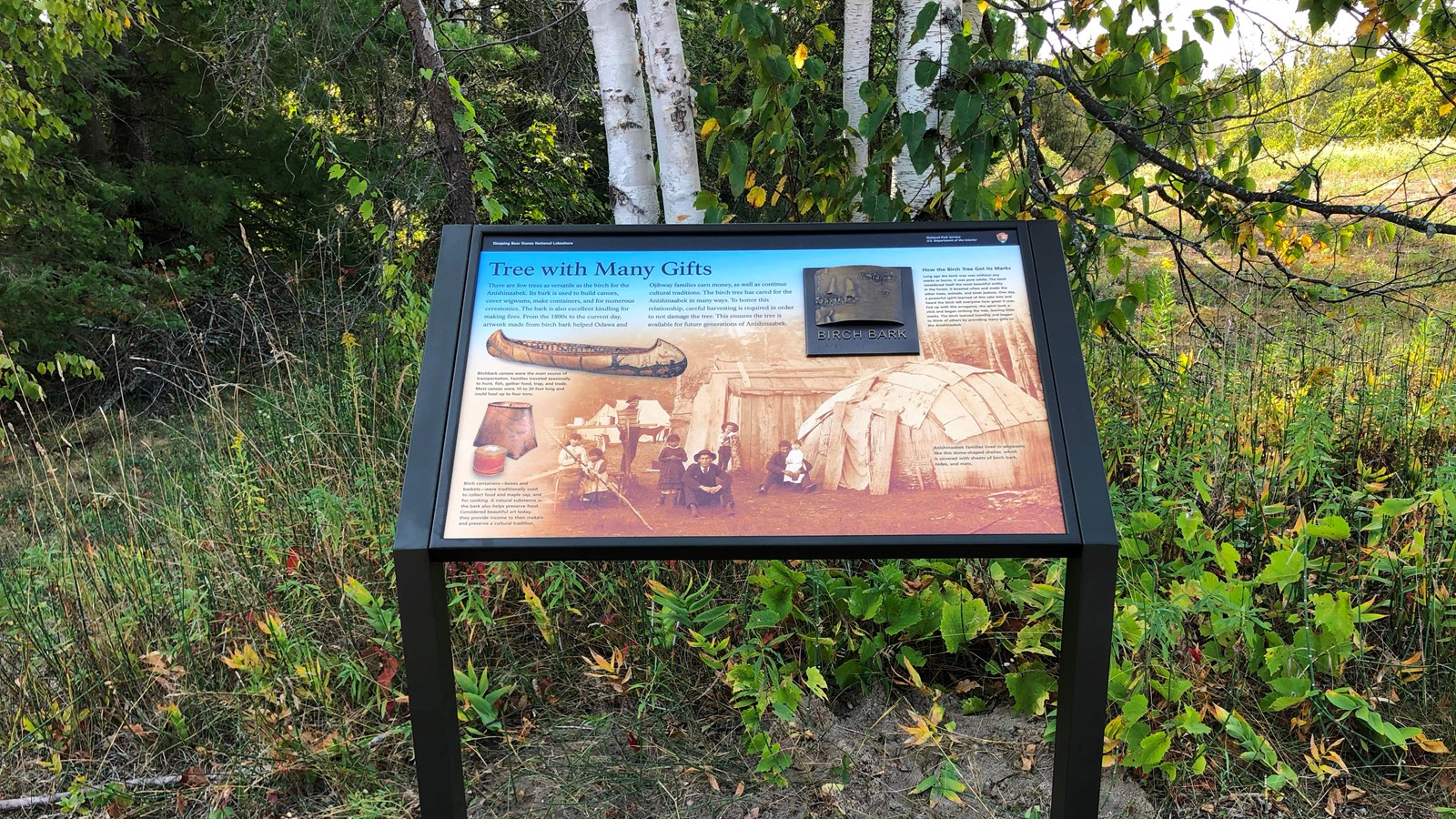Last updated: November 12, 2024
Place
Wayside: Tree with Many Gifts

Audio Description, Tactile Exhibit
Main Exhibit Text
There are few trees as versatile as the birch for the Anishinaabek. Its bark is used to build canoes, cover wigwams, make containers, and for numerous ceremonies. The bark is also excellent kindling for making fires. From the 1800s to the current day, artwork made from birch bark helped Odawa and Ojibway families earn money, as well as continue cultural traditions. The birch tree has cared for the Anishinaabek in many ways. To honor this relationship, careful harvesting is required in order to not damage the tree. This ensures the tree is available for future generations of Anishinaabek.
Image Descriptions
Background Image
The background of this exhibit is a sepia-colored historic photograph of Anishinaabek children and young adults in their village. On the left side of the image, there are two young girls holding hands. Behind them is a wood table, with containers of various size and material set on top. A young man stands behind the table, partially hidden by a wooden bucket on the table. To the right of the table, a girl in a dark patterned dress and boots stands next to a young man seated on the ground. Behind this seated man, a small child stands next to one of the wigwams, leaning against a birch tree stump. On the right side of the image, a man is seated next to a dome-shaped wigwam, holding a small child in a white dress.
Caption
Anishinaabek families lived in wigwams like this dome-shaped shelter, which is covered with sheets of birch bark, hides, and mats.
Birchbark Objects (left)
On the left side of the exhibit are several items historically constructed out of birch bark. There is a canoe, a basket, and a box with a lid decorated with a white six-pointed star.
Caption
Birchbark canoes were the main source of transportation. Families traveled seasonally to hunt, fish, gather food, trap, and trade. Most canoes were 10 to 20 feet long and could haul up to four tons.
Birch containers – boxes and baskets – were traditionally used to collect food and maple sap, and for cooking. A natural substance in the bark also helps preserve food. Considered beautiful art today, they provide income to their makers and preserve a cultural tradition.
Tactile Exhibit (top right)
In the top right corner of the exhibit is a bronze tactile of birch bark. It includes raised letters and braille of the word “BIRCH BARK.”
Caption
How the Birch Tree Got Its Marks
Long ago the birch tree was without any marks or burns. It was pure white. The birch considered itself the most beautiful entity in the forest. It boasted often and made the other trees, animals, and birds jealous. One day, a powerful spirit learned of this vain tree and heard the birch tell everyone how great it was. Fed up with this arrogance, the spirit took a stick and began striking the tree, leaving little marks. The birch learned humility and began to think of others by providing many gifts to the Anishinaabek.
